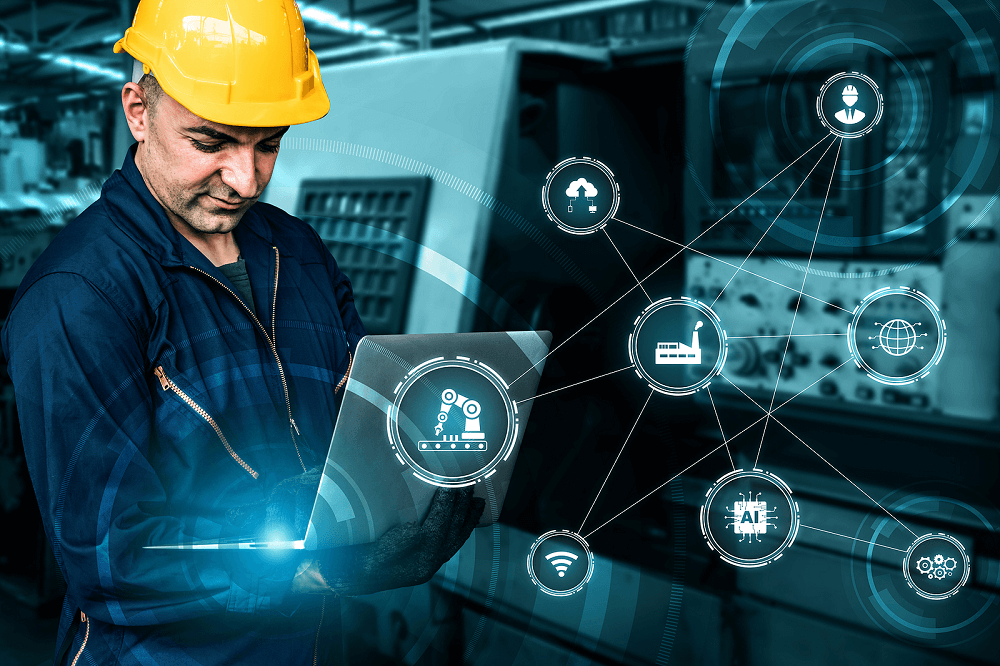Often abbreviated as DAQ, data acquisition refers to collecting sample signals allowing the measurement of physical phenomena in the real world. These signals convert into a digital medium that a computer can calculate when equipped with data acquisition software.
DAQ is the modern variation of past measurement practices that relied on paper charts or tape-recording devices. However, in those methods, the signals remained in analog form.
In contrast, data acquisition involves converting analog measurements into the digital domain. The DAQ system will record the data on a digital device, like a hard disk drive (HDD), solid-state drive (SSD), or flash media.
Below, we’ll outline the critical components of DAQ. We’ll also discuss the capabilities and features of a data acquisition system so that you can understand how DAQ software is in use today and its overall importance within various industries.
Data Acquisition System: What You Need
What is DAQ? Regardless of its purpose, every DAQ system must offer four essential components. These include:
-
-
Sensors
-
A sensor or transducer is responsible for interacting with the measured phenomena. Depending on the analyzed event, the interaction may occur either indirectly or directly.
The sensor is responsible for converting the physical values of the measurable event into electric signals. The exact type of sensor used on a project will depend on the application of the DAQ system.
For instance, measuring light requires a photovoltaic sensor. Conversely, if your goal is to obtain exact temperature measurements, you will need a temperature sensor.
The standard function of all types of sensors is to convert analog signals relating to things like speed, light, or temperature into digital signals. Then, the computer can interpret the converted signals by the computer’s data acquisition software.
-
- Signal Conditioning Equipment
Often, incoming signals from DAQ sensors cannot convert without modification. In addition, these signals are so weak that the data acquisition software cannot measure them.
DAQ systems include transmission or signal conditioning equipment to resolve conversion issues. This additional circuitry is responsible for optimizing the signals to be used by the data acquisition system.
The signal conditioner filters out irrelevant noise from the true signal and amplifies this feedback. In addition, some signal conditioners can perform additional tasks, such as calibrating the DAQ sensor.
-
-
DAQ Hardware
-
What is DAQ hardware? Data acquisition hardware is the entity that bridges the gap between the sensors and the computer software.
DAQ hardware can be connected to your computer in one of two ways: It can be plugged into the USB ports or tied directly to one of the PCI-Express slots on the motherboard.
The chief function of DAQ hardware is to take analog signals from the sensors and convert them into digital signals that the computer software can read.
Additional functions of data acquisition hardware may include:
-
-
- ADC
-
Analog-to-digital conversion (ADC) is the most basic function of DAQ hardware. Without this conversion process, the data collected by the sensors would not be usable.
-
-
- Digital to Analog Conversions
-
DAQ hardware can also support digital-to-analog conversions, which allows the output of binary signals back to the sensors.
-
-
- Interface
-
Data acquisition hardware can even facilitate communication between supplemental devices, including handheld equipment that allows you to operate the DAQ system remotely.
-
-
- Standalone Functionality
-
As technology continues to advance, standalone DAQ hardware has become more prevalent. This equipment can operate without a connection to a computer because it has its processor and CPU.
Standalone equipment gives users access to real-time data. Some examples of these types of DAQ hardware include data loggers and standalone oscilloscopes.
-
-
Computer
-
The final piece of the data acquisition puzzle is the computer. The computer is responsible for gathering all of the transmitted data from the DAQ hardware. However, you can’t simply connect data acquisition hardware to any computer. The computer must install the requisite software.
DAQ software leverages the data from the hardware and converts it into readable forms. The data acquisition software links the user to the newly digitized data. Computers with the proper software allow users to perform advanced computations to use the data meaningfully.
What Measurements Can a DAQ System Provide?
The primary purpose of data acquisition systems is to allow for the measurement of physical occurrences and attributes, such as:

While these are the primary data types collected with DAQ systems, signals can also measure sounds, mass, speed, and light. If you need to measure and track natural phenomena precisely, data acquisition equipment is the best way to accomplish this mission.
Purpose of DAQ
Generally speaking, the purpose of DAQ is to obtain and store data about physical phenomena. However, these systems also provide users with real-time capabilities for visualization and data analysis. Furthermore, since the systems record the data, users can also review the data after the measurement process has concluded.
Most DAQ systems have built-in report generation and analytics capabilities. In addition, modern data acquisition equipment usually pairs with a precision control system, which allows you to measure physical occurrences and actively alter specific attributes in real-world scenarios.
While engineers in different industries have varying needs, the following are capabilities that are present in almost every data acquisition system:
- Report generation
- Data analysis
- Data review
- Real-time visualization
- Data storage
- Data recording
While DAQ instruments’ primary design is for data collection, they are also for monitoring purposes. A few examples include:
- Monitoring the performance of equipment, such as motors and generators
- Assessing the structural integrity of bridges, stadiums, etc.
- Analyzing energy efficiency during manufacturing processes
Data acquisition equipment and its associated software are essential to the success of hundreds of industries. Through the power of DAQ, organizations can improve the efficiency of their processes and maintain a safe working environment for all.
Why Data Acquisition Systems Are Important
Data acquisition systems are essential for a variety of reasons. Perhaps most significant is that DAQ is used to test virtually every kind of electromechanical equipment, including medical devices and industrial machinery.
Before the rise of data acquisition software, these products were tested using highly questionable and subjective methods. For instance, vehicles were tested by gathering user feedback on how it felt to drive them. As you might imagine, this left a lot of room for error and user bias.
Fortunately, the implementation of DAQ has allowed manufacturers to replace these unreliable testing methods with real-world data. As a result, they can objectively measure products for reliability, safety, and performance.
Data acquisition has become the industry standard for testing and refining aircraft, medical equipment, vehicles, and machinery.
The Process
Now that we have outlined what DAQ is and when to utilize this equipment let’s break down the actual measurement process.
The first stage of data acquisition is to measure analog signals in the physical world, which occurs through transducers and sensors.
One of the most common examples of a sensor is a digital thermometer. It collects analog data (temperature), converts the information into a digital format, and displays the reading on a small screen.
The second stage of DAQ is signal conditioning. This circuitry prepares the analog data and sends it in a digital format. It isolates and amplifies the analog signals so that the DAQ hardware can sufficiently measure them.
The third phase involves ADC or analog-to-digital conversion. The DAQ hardware performs ADC. The data acquisition equipment will convert the signals to a digital format and relay them to the computer software or built-in CPU.
During the final stage of DAQ, the computer records and displays the real-time data. Again, the information displays in such a manner that it is easy to interpret.
The data from the digital thermometer example displays as a series of numbers that indicate the user’s temperature.
More advanced DAQ systems will display the data and store it, allowing for the review of the information later.
Common Types of DAQ Systems
When you’re designing a data acquisition system, there are many different possible configurations. First, you must choose the type of sensors, signal conditioning equipment, and hardware that will be the most suitable for your intended purposes.
Second, DAQ systems typically have two main categories, which are:
-
-
DIY Platforms
-
A DIY platform involves the use of modular components. With this approach, you must select each piece of your DAQ system individually and assemble it, including the software package, sensors, hardware, and signal conditioners.
DIY platforms offer superior customization, but they also require an advanced understanding of data measurement principles.
The primary benefit of a DIY platform is that it offers superior flexibility. You can create a DAQ system to meet the unique demands of your organization. However, building out and programming your system can be incredibly time-consuming. That is why many users opt for a turn-key system.
-
-
Turn-Key DAQ System
-
More commonly referred to as an integrated DAQ system, turn-key equipment is ready to use right out of the box. The wholly integrated hardware and software require virtually no setup or programming.
Integrated systems do not offer as much flexibility as DIY setups, but they are great for data logging applications.
Data loggers are to record environmental information over an extended period. They allow you to measure, analyze, and validate the data by transferring it to a computer equipped with the required software.
Typical DAQ Configurations

Every DAQ system must include sensors, signal conditioners, hardware, and a computer equipped with data acquisition software. However, DAQ systems can be configured in a wide variety of ways.
Below, we’ve identified two of the most common physical configurations that are popular in many industries.
-
-
Modular Systems
-
In a modular DAQ system, all core components are separate entities. First, they must connect via USB or other types of cables. Next, the sensors are connected directly to the DAQ hardware. Then, the data acquisition hardware finally links to the computer, responsible for storage, data processing, and display.
Most of the time, the signal conditioner and DAQ hardware are together in a single piece of equipment connected to the computer, as described above. However, some modular DAQ systems have to be installed into the computer using a PCI or other standardized format. Installing data acquisition hardware using this method requires a little more technical knowledge.
If you need data acquisition solutions in a fixed location, such as in a manufacturing facility, then modular equipment is an excellent option.
-
-
Integrated DAQ Systems
-
Integrated data acquisition systems are a much more convenient solution. The single piece of equipment contains all vital components, including A/D converters, signal conditioners, storage hardware, data display equipment, and data processing capabilities.
Integrated DAQ systems offer many benefits over modular packages. The most apparent is that they are immediately ready for use as soon as the equipment arrives.
In addition, integrated systems are the superior choice for mobile applications and fieldwork. You can rapidly deploy the integrated data acquisition equipment without having to hassle with cords or cables.
Integrated systems do have two drawbacks. The first is that these data acquisition solutions are a bit more expensive than modular systems. Secondly, integrated systems do not offer as much room for customization.
However, DAQ technology continues to advance year after year. These advancements have created integrated systems that are much more robust than they were in the past.
Unless you have highly strenuous data acquisition needs, integrated DAQ equipment is likely the most practical solution for your organization.
Sensor Solutions from APG
If you are looking for high-quality measurement devices like transmitters, sensors, and transducers, reach out to Automation Products Group, Inc. We offer cutting-edge solutions for your DAQ system needs.
Contact us today to find out more on how to get started.
WRITTEN BY

Sami T.
Sami Thompson is APG’s Marketing Technical Writer and has been with the company since 2022. With a master’s degree in English from Utah State University and a 40-page thesis publication under her belt, Sami has a demonstrated strong writing background. In her free time, Sami enjoys reading and birdwatching.


